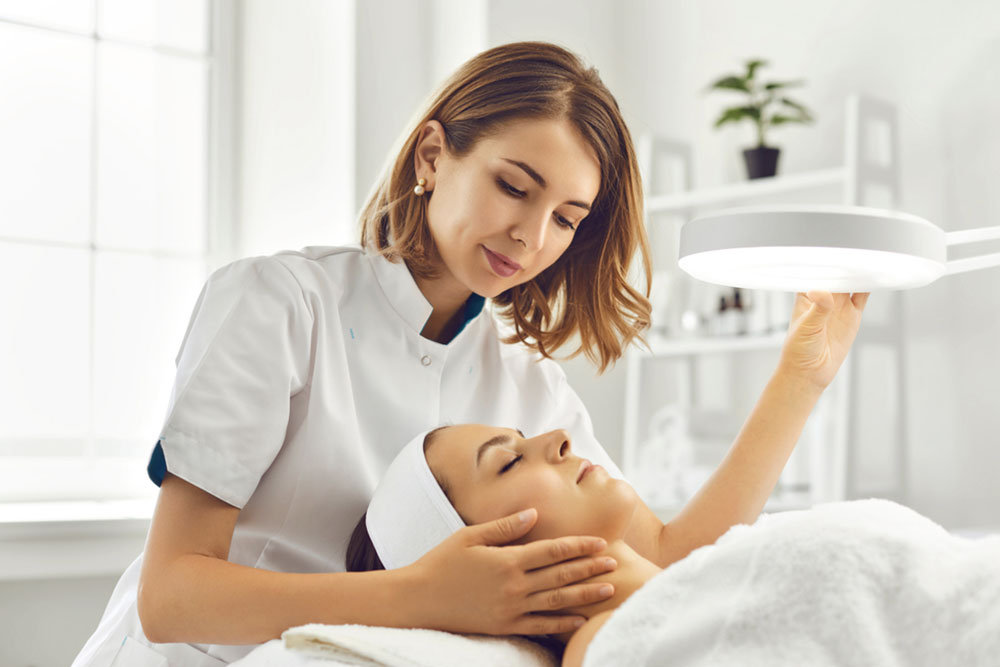
8 Signs of Skin Problems That Require Expert Consultation
The skin is the largest organ in the body, covering two square meters for a grown adult, and weighs about 16% of the total body mass. It also means the large area is susceptible to exposure and infections that can cause a number of skin problems. Sometimes, the discomfort can be managed with simple preventive measures and home remedies. But some signs and symptoms should never be ignored, and immediate professional consultation is advisable.
Unusual spots or new spots
Moles are common discolorations of the skin that develop as small spots across random locations in the body. In most cases, these are benign and are not a major cause for concern if there is no change in the existing number or shape of moles. But if one notices multiple new moles developing without warning or notices changes in the size and shape of the existing moles, immediately consult with a dermatologist. These changes in size and shape could indicate melanoma, one of the deadliest types of skin cancer. It is also advisable to get a skin examination done regularly to identify mole clusters and unusual spots on the skin. Skin cancer is manageable to a great extent when diagnosed and treated early.
A bad acne problem
Mild to moderate acne problems can be managed with topical creams and lotions that work their way into the skin to soothe from the outside. However, some types of acne are triggered as a side effect due to underlying health complications and persist longer. Inflammation is one of the primary triggers of acne. These breakouts develop a painful red and itchy center that forces one also to scratch away at the blemishes. However, popping such blemishes releases more bacteria and causes acne to spread. Popping acne can also cause scarring that only a specialist doctor, like a dermatologist, will be able to heal and cure. So, book an appointment for skin issues like acne and breakouts without further delay.
Rashes and hives
Rashes are commonly triggered due to an allergic reaction when the skin comes in contact with certain types of toxins. An allergic reaction is mainly triggered when the immune system launches an attack to counter the allergen. Rashes can be either caused due to existing skin sensitivity or may develop as a side effect of a new skin condition. In any case, these new sore spots can be extremely painful to touch and will cause itching and scarring. Circular rashes, commonly referred to as ringworms, are contagious, meaning they spread with direct contact. So, it is important to consult a dermatologist to explore topical and oral prescriptions for managing rashes.
Skin lesions and discoloration
Melanin in the skin is the primary pigment that gives the skin its unique color. The higher the concentration of melanin, the darker will be the skin color. This is why people belonging to different geographical regions boast a lighter or darker skin tone. However, discoloration that develops for no apparent reason and is visible on very clear spots all over the body is a cause for concern that must be clarified with the dermatologist. Also, if there are skin lesions like freckles, moles, or random brown patches that develop primarily due to sun exposure, one must keep an eye on these patches as well. Get any new sports and lessons checked.
Psoriasis and eczema
Learn to identify the symptoms of common skin conditions like psoriasis and eczema. Psoriasis is a condition that triggers skin cells to group and form an itchy rash that persists. These dry patches of itchy skin are triggered due to an autoimmune response by the body. The initial symptoms are quite mild and don’t cause any major discomfort. However, advancing psoriasis forces the patches to spread from the localized region and affect the whole body. Similarly, eczema, alternatively known as atopic dermatitis, is a condition that causes blisters and rashes to develop on the outer skin. Inflammation of the skin is the leading trigger for eczema. Both conditions need thorough diagnosis and treatment that only a dermatologist can prescribe.
Excessive hair fall and bald spots
Hair loss can happen due to underlying health complications that trigger a hormonal imbalance. Hair fall can also be the result of unnatural styling and excessive use of products. When the roots of the hair follicles weaken, it cause the strands to wither and dislodge. Bald spots on the scalp are common and appear in patterns as the person ages. However, unexpectedly losing hair on the forearms, legs, chest, or back without an explanation is cause for concern. Even rapidly losing eyelashes can indicate an underlying metabolic disorder caused due to hormonal imbalances. Consult with a dermatologist so that the doctor can perform certain diagnostic tests to identify the underlying problem.
Cold sores
Cold sores are a type of lesion that develops due to fever or underlying infection that triggers these breakouts. It could also be a sign of STDs like herpes, which are painful blisters at the mouth’s rim. In mild to moderate cases, cold sores don’t require any major intervention and tend to subside in time. But if these painful blisters persist and spread from the localized area, it is better to consult with a dermatologist to understand minimal treatment options.
Skin redness and flushing
Red spots on the skin indicate inflammation and may trigger acne formation, leading to breakouts. However, flushing is a common side effect of underlying skin disorders that should not be ignored. And since many of the symptoms of known skin problems overlap, it’s always better to consult a professional. Take time to understand the best preventive measures and treatments to avoid further complications.
At any given point in time, if these symptoms persist or flare up, causing discomfort, immediate consultation is advisable.


